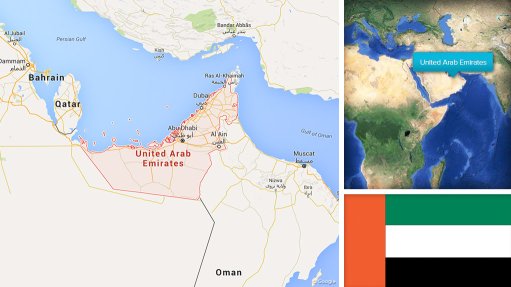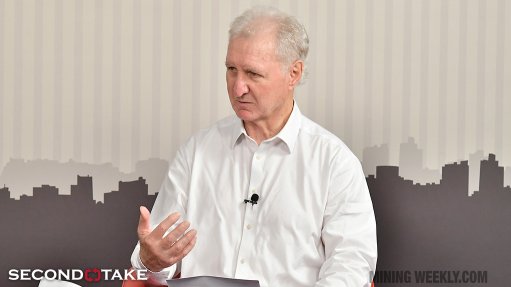LHWP delays threaten water security for 45% of South Africans


MIKE MULLER We shouldn’t be relying on good luck with the weather for the water security of so many people
Photo by Duane Daws
The recent appointment of the Matla a Metsi joint venture for the design and construction supervision of the Polihali dam, part of the larger Phase 2 Lesotho Highlands Water Project (LHWP) that was initially forecast for completion by 2020, raises concerns as to whether delays may be unnecessarily placing the water security of millions of people at risk.
University of the Witwatersrand School of Governance professor Mike Muller notes that, while there is no immediate danger to the areas supplied by water utility Rand Water, last year’s “mild drought” highlighted the inability of the system to meet ever-increasing demand.
“Is there going to be enough water in the next ten years? It depends on what the weather is going to do,” he notes, adding that another draught, even a mild one, will force authorities to implement stricter water restrictions to take into account for population growth.
“We shouldn’t be relying on good luck with the weather for the water security of so many people. That’s dangerous.”
Municipalities supplied by Rand Water, mostly in Gauteng, were forced to reduce water use towards the end of last year, when it was reported that the Vaal dam was below 25% capacity. The Department of Water and Sanitation announced the lifting of water restrictions in February and in May announced that the 14 dams comprising the Integrated Vaal River System (IVRS) had reached more than 80% of their combined capacity.
Rand Water’s supply depends on the IVRS, which provides water for about 45% of South Africa’s population and supports 60% of the national economy.
The LHWP is the major water source for the IVRS. Phase 2 of the project, valued at R23-billion, comprises two main water-transfer components: the construction of the 2 322-million-cubic-metre Polihali dam, on the Senqu river, and the construction of the 38.2-km-long Polihali–Katse water transfer tunnel.
Muller notes that the design and construction supervision tenders for both components were advertised in September 2015; however, the successful bid for the transfer tunnel component has yet to be announced, raising concerns of further delays.
The Lesotho Highlands Development Authority expects construction of the dam to start by December 2019 or January 2020, although the latter date is more likely, owing to the construction sector’s mass shutdown every December.
Muller notes that the LHWP was identified as a key project in the National Development Plan (NDP), which was released in June 2013 and stated that the project was to be completed by 2020. However, Water and Sanitation Minister Nomvula Mokonyane has been delaying the project’s progress since 2015 to find suitable contractors that would result in greater transformation, raising suspicions of potential crony deployment on the project.
Says Muller: “There is no question that we should have built the dam a long time ago. If there is a drought, we know there isn’t enough water and there will have to be restrictions. The question is: Should we not be restricting water from now until the dam is completed?”
He suggests that, amid uncertainty and increasing risks, systematic restrictions should be imposed on all users of the Rand Water system, with continual targets for municipalities regarding the amount of water they can use and supply being cut off if they use more than they should.
“As consumption grows, you become more . . . vulnerable every year. The effects of a draught will hit you quicker and it will hit you harder, so you have to get people used to using less,” Muller concludes.
Article Enquiry
Email Article
Save Article
Feedback
To advertise email advertising@creamermedia.co.za or click here
Press Office
Announcements
What's On
Subscribe to improve your user experience...
Option 1 (equivalent of R125 a month):
Receive a weekly copy of Creamer Media's Engineering News & Mining Weekly magazine
(print copy for those in South Africa and e-magazine for those outside of South Africa)
Receive daily email newsletters
Access to full search results
Access archive of magazine back copies
Access to Projects in Progress
Access to ONE Research Report of your choice in PDF format
Option 2 (equivalent of R375 a month):
All benefits from Option 1
PLUS
Access to Creamer Media's Research Channel Africa for ALL Research Reports, in PDF format, on various industrial and mining sectors
including Electricity; Water; Energy Transition; Hydrogen; Roads, Rail and Ports; Coal; Gold; Platinum; Battery Metals; etc.
Already a subscriber?
Forgotten your password?
Receive weekly copy of Creamer Media's Engineering News & Mining Weekly magazine (print copy for those in South Africa and e-magazine for those outside of South Africa)
➕
Recieve daily email newsletters
➕
Access to full search results
➕
Access archive of magazine back copies
➕
Access to Projects in Progress
➕
Access to ONE Research Report of your choice in PDF format
RESEARCH CHANNEL AFRICA
R4500 (equivalent of R375 a month)
SUBSCRIBEAll benefits from Option 1
➕
Access to Creamer Media's Research Channel Africa for ALL Research Reports on various industrial and mining sectors, in PDF format, including on:
Electricity
➕
Water
➕
Energy Transition
➕
Hydrogen
➕
Roads, Rail and Ports
➕
Coal
➕
Gold
➕
Platinum
➕
Battery Metals
➕
etc.
Receive all benefits from Option 1 or Option 2 delivered to numerous people at your company
➕
Multiple User names and Passwords for simultaneous log-ins
➕
Intranet integration access to all in your organisation



















